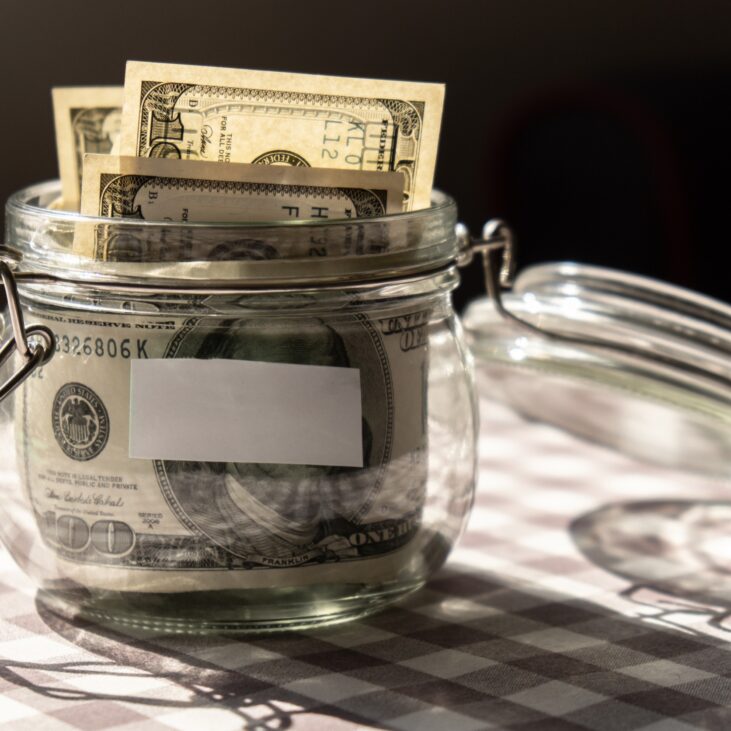Takeaways
- Dividend investing can help generate passive income and capital appreciation.
- Dividend reinvestment plans, DRIPs, are great mechanisms to spur dividend investing.
- You can accelerate long-term investment returns with DRIPs.
- DRIPs reinforce investing for the long term and are easy to set up.
- DRIPs can help with automating your financial ecosystem.
What is a Dividend Reinvestment Program?
A Dividend Reinvestment Program, or DRIP, is a plan that allows investors to reinvest their dividend distribution from a dividend-paying stock back into shares of the company. Instead of receiving your dividend distribution as a direct deposit into your online brokerage account, the company gives you back full or fractional shares equivalent to your dividend distribution.
Smart Money -> Best Online Stock Brokerage Accounts
Public companies and online brokers offer dividend reinvestment plans, but these plans are most referred to when discussing programs run directly by publicly traded companies. Shareholders in companies with dividend reinvestment programs can automatically elect to reinvest their recurring quarterly dividend distributions back into their investment in the company, compounding their investment.
Smart Money -> What is a Dividend?
How DRIPs Work
Investors looking to generate passive income streams often invest in dividend-paying stocks. Companies that distribute dividends are mature with strong cash flows and business models. Paying dividends allows the company to reward its shareholders by issuing cash payments, called dividends, to its current shareholders regularly, usually quarterly or annually.
When a company declares a dividend and an investor has elected to participate in a dividend reinvestment program, the investor does not receive a cash payment from the company but instead gets shares or fractional shares deposited into your brokerage account.
Smart Money -> What is Stock? How to Buy Stocks and More.
Dividend reinvestment programs offered directly by a company allow investors to purchase stock from the company’s share reserve. Technically speaking, you are not buying shares from the open market but directly from the company itself. Because of this, many DRIPs allow investors to purchase the stock at a slight discount, commission fee, or a low transaction fee. Some companies require a minimum reinvestment amount to incentivize investors to buy more stock.
Smart Money -> 9 Ways to Generate Passive Income
Example of a DRIP
John wants to invest in dividend-paying stocks. He decides to purchase 1,000 shares of a well-established consumer package goods company. This company has a dividend reinvestment program, and John elects to participate in the program through his online brokerage account. The company declares a dividend of $10 per share payable at the end of the first quarter. On that date, the market value of a single share of this company is $100.
Smart Money -> 7 High-Yielding Dividend Paying Stocks
At the end of the quarter, John receives a cash dividend of $10,000 ($10/share X 1,000 shares). Because John has elected to participate in the dividend reinvestment program, his cash dividend converts into 100 ($10,000 /100 market price per share) shares of the CPG company. John will now own a total of 1,100 shares of the company.
Smart Money -> What is the Stock Market?
5 Advantages of DRIPs
There are many advantages for investors to participate in dividend reinvestment plans. Here are five key insights that can help your portfolio:
1. Easy to Set Up
Dividend reinvestment programs are easy to participate in if you are investing in a company’s dividend-paying stock that offers this program. You can elect to participate through your online brokerage account when investing in the stock. Alternatively, you can invest directly in the plan offered by the company.
Smart Money -> What are Dividend Aristocrats?
2. Dollar Cost Averaging
Investors can be very sensitive to price risk, or the risk that a stock's value will decline. Because of price risk, you should be cognizant of how much you are willing to pay. By buying a stock over a regular period, say quarterly, you can hedge against price risk.
Smart Money -> 10 Investment Strategies for Beginners
One investment strategy to manage pricing risk is dollar-cost averaging or purchasing an investment over a period at differing prices. For example, if you buy a stock for $100 and the price increases to $110, you buy. If the price decreases in the next quarter to $90, you buy. This cycle continues in dollar-cost averaging. By purchasing stock consistently, instead of at a single price point, you can manage the fluctuation of a stock price over time.
3. Compound Return
Cash dividends are converted into shares of the company’s stock on dividend payment dates. Because of this reinvestment in the company’s stock, you can continue to accumulate your investments faster and harness the power of compounding interest.
Smart Money -> What is a High-Yield Bond?
As you convert cash dividends into more shares, your cash dividends increase as you accumulate more dividend-paying shares. This cycle of reinvestment can increase an investor’s overall investment returns.
4. Low Trading Fees
Accumulating more shares through a dividend reinvestment program can be done at a low cost because you are typically not charged a commission on these shares when the program is handled by the company. Some companies even offer the shares at a discount on the current market price. Additionally, online brokers don’t usually charge additional broker fees to move these shares into your account.
Smart Money -> 5 Steps to Invest in Your First ETF
5. Automated Investing
Participation in dividend reinvestment programs removes the necessity to decide what to do with your cash dividend each dividend declaration cycle. Automating this decision by participating in a DRIP eliminates decision fatigue, allowing you to focus on finding new investment opportunities.
Smart Money -> Financial Advisors: 5 Financial Events to Consult with a Financial Advisor
Taxes With DRIPs
Although investors participating in a dividend reinvestment program never receive cash distributions, investors are still taxed on those distributions even though the form of dividend payment has changed from cash payments to reinvested stock. The IRS still considers this dividend distribution as income to the investor.
Smart Money -> 2024 Tax Income Rates and Brackets
The distributed shares are treated like any other dividend payment to determine whether they are ordinary or qualified dividends. However, capital gains are not calculated for tax purposes until the stock issued as part of a dividend reinvestment program is sold.
Smart Summary
Investing in dividend reinvestment programs can be a central component of your overall investment strategy because dividend-paying stock can boost returns through capital appreciation and passive income generation. For young investors, this rapid accumulation can compound and morph into a massive passive income portfolio. Investors approaching retirement can view DRIPs as another way to supplement their passive income portfolio. DRIPs are programs that should be utilized regularly by all kinds of investors.










